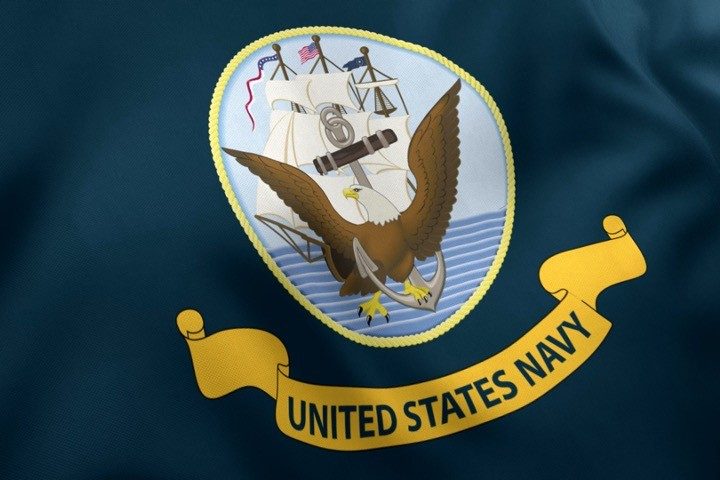
Admiral Bull Halsey is spinning in his grave at Arlington National Cemetery.
The U.S. Navy has lowered its physical fitness standards for the third time in less than a year.
This time, it will permit sailors who fail a physical fitness test twice to stay in the service at the discretion of their commanders.
How that will improve the morale and readiness of the Navy is unclear. But the move appears to recognize the reality that Americans simply aren’t physically fit.
The vast majority of American youngsters, the data show, do not have the physical strength to wear the uniform of their country.
New Policy
Military.com cut through the military bureaucratese of the Navy memorandum that delivered the good news for the service’s weaklings and chubsters. Those who fail a physical fitness test twice won’t automatically lose a promotion or be kicked out of the service.
“Under the old system, sailors who failed one physical fitness assessment, or PFA, lost their ability to be promoted until they were able to pass another test, but their careers would largely proceed onward,” the website explained:
However, failing another consecutive PFA would end a career by taking away the ability to be promoted or to reenlist.
The Navy will now allow those career-ending actions to come at the discretion of a sailor’s commanding officer instead of a fleet-wide mandate.
The Navy’s “culture of excellence … charges our leaders to build great people, great leaders, and great teams: their minds, bodies, and spirits, eliminating barriers wherever possible. In response, we are modernizing our PFA policy to acknowledge our diverse population, increase Sailor trust, and enhance quality of service,” the memorandum says:
Building the bodies of great people is more than annual (or biannual) testing and includes ensuring healthy food, adequate sleep, opportunities to exercise (especially outside), and medical readiness.
Commanding Officers (COs) are able to evaluate a Sailor’s physical readiness progress or lack of progress in performance evaluations, giving them the ability to manage risk, recognize earnest effort, and best take care of their people.
That “diverse population” that needs acknowledging, by the way, includes “transgenders,” whom President Joe Biden decided should serve openly with normal personnel.
Other Changes
The lowered fitness standard is no surprise to anyone watching the service. Its personnel are growing weaker by the year.
Such is the physical fitness of Navy personnel that the service forgave past fitness test failures to retain 1,500 sailors.
Reported Military.com in February, “The move is one of several tweaks to the service’s physical fitness rules that leaders hope will help it keep enough sailors in uniform.”
In other words, failing fitness tests wouldn’t count “when considering authority to reenlist, advance, promote, or execute other career continuation transitions such as extensions and duty station transfers,” a Navy memorandum said.
And to accommodate postpartum mothers, in November, the Navy dropped its physical fitness test they had been required to pass.
Instead, the memorandum said, “Sailors should participate in a progressive and appropriate exercise program, as soon as medically authorized, to return to Navy physical fitness standards.”
A better idea than these adjustments might be ordering its sailors to get in shape, and not permitting pregnant women or postpartum mothers to continue serving.
Overweight Nation
Bad as the news on Navy physical fitness is, more unsettling is the news about the physical fitness of American youngsters.
A Pentagon study released in 2022 found that almost 80 percent of Americans ages 17-24 were ineligible for military service because they are too fat, too crazy, or too addicted to drugs.
“The proportion of youth eligible for military service without a waiver is 23%,” the study explained. In other words 77 percent of youngsters can’t serve. And that number increased from 71 percent in 2017.
Forty-four percent of youngsters were ineligible for service for multiple reasons, the study showed. And “the largest increases in disqualification estimates observed between 2013 and 2020 were for mental health and overweight conditions.”
Continued the study:
When considering youth disqualified for one reason alone, the most prevalent disqualification rates are overweight (11%), drug abuse (8%), and medical/physical health (7%).
The Navy’s physical fitness requirements for passing boot camp — planks, push-ups, and a timed 1.5 mile run — are easy, its website shows.
As for what kind of shape one must be in to join, “you won’t need to meet any physical fitness requirements before joining the Navy as an enlisted Sailor.”
Maybe that’s because, since so many youngsters are out of shape, part of the Navy’s job is resolving that problem after they enlist.
To join the Marine Corps, part of the Naval service, prospective recruits must pass three tests consisting of either timed planks, pull-ups or push-ups, and a timed 1.5-mile run.
To wear the Eagle, Globe, and Anchor (the official emblem of the Marines), a recruit must pass “The Crucible,” which includes the following, according to the Marine Boot Camp website:
- Sleep deprivation
- Limited food
- Physical exhaustion
- 48 miles of hiking
- 8 physically and mentally demanding events
- Simulated casualty evacuations throughout each event
The Navy’s physical fitness overhaul might not serve it well, as goes respect for Navy personnel among physically-fit U.S. Marines.
Marines deploy across the word on Navy ships and serve with sailors in close quarters for months at a time.
H/T: Legal Insurrection



